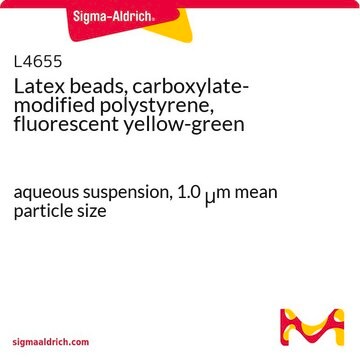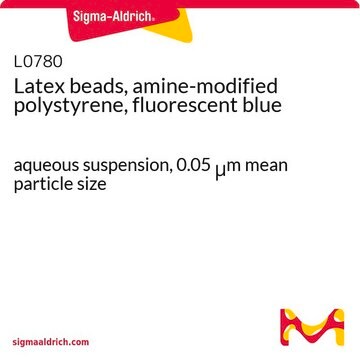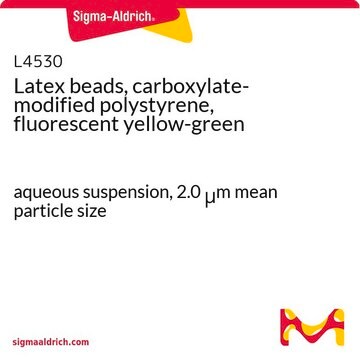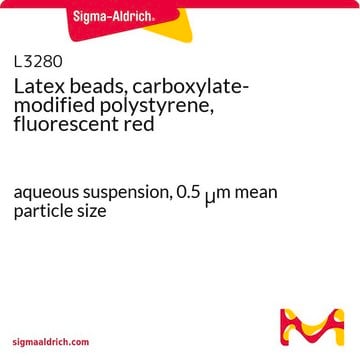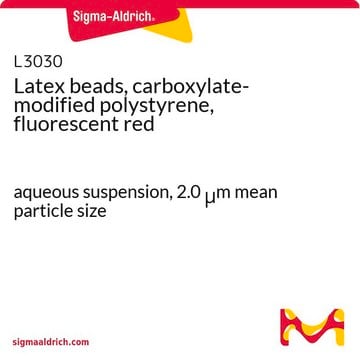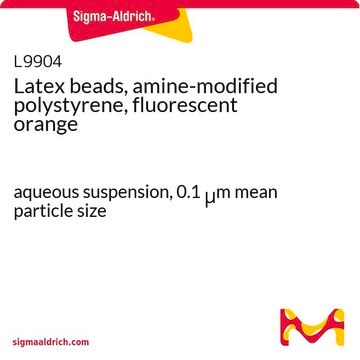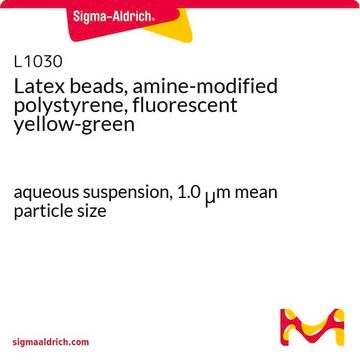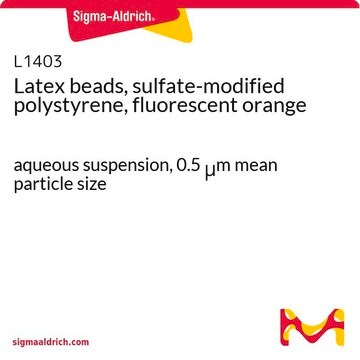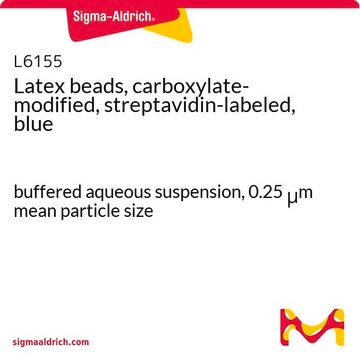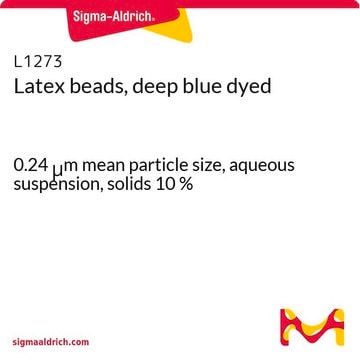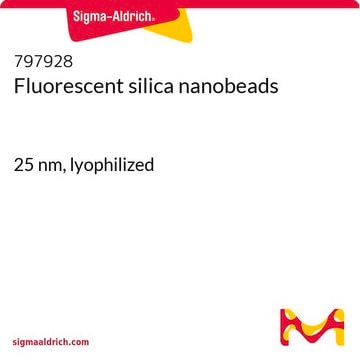This product has a solid content (bead content) of 2.5% (w/w). The product density is reported on a lot specific basis with a range of 1.04 - 1.06 g/mL. The bead number can be calculated and then diluted according to the required number. The formula for determining the number of beads in the samples is: Bead number = (6.03 x 10^10) x (percent solids) / 3.30 x (bead diameter).
L5155
Latex beads, carboxylate-modified polystyrene, fluorescent yellow-green
aqueous suspension, 0.03 μm mean particle size
Synonyme(s) :
Fluorescent latex beads
Sélectionner une taille de conditionnement
Sélectionner une taille de conditionnement
About This Item
Produits recommandés
Forme
aqueous suspension
Composition
Solids, 2.5%
Technique(s)
cell based assay: suitable
Taille moyenne des particules
0.03 μm
Fluorescence
λex ~470 nm; λem ~505 nm
Application(s)
cell analysis
Vous recherchez des produits similaires ? Visite Guide de comparaison des produits
Application
Code de la classe de stockage
10 - Combustible liquids
Classe de danger pour l'eau (WGK)
WGK 3
Point d'éclair (°F)
Not applicable
Point d'éclair (°C)
Not applicable
Faites votre choix parmi les versions les plus récentes :
Certificats d'analyse (COA)
Vous ne trouvez pas la bonne version ?
Si vous avez besoin d'une version particulière, vous pouvez rechercher un certificat spécifique par le numéro de lot.
Déjà en possession de ce produit ?
Retrouvez la documentation relative aux produits que vous avez récemment achetés dans la Bibliothèque de documents.
Les clients ont également consulté
-
What is the concentration of product L5155?
1 answer-
Helpful?
-
Active Filters
Notre équipe de scientifiques dispose d'une expérience dans tous les secteurs de la recherche, notamment en sciences de la vie, science des matériaux, synthèse chimique, chromatographie, analyse et dans de nombreux autres domaines..
Contacter notre Service technique